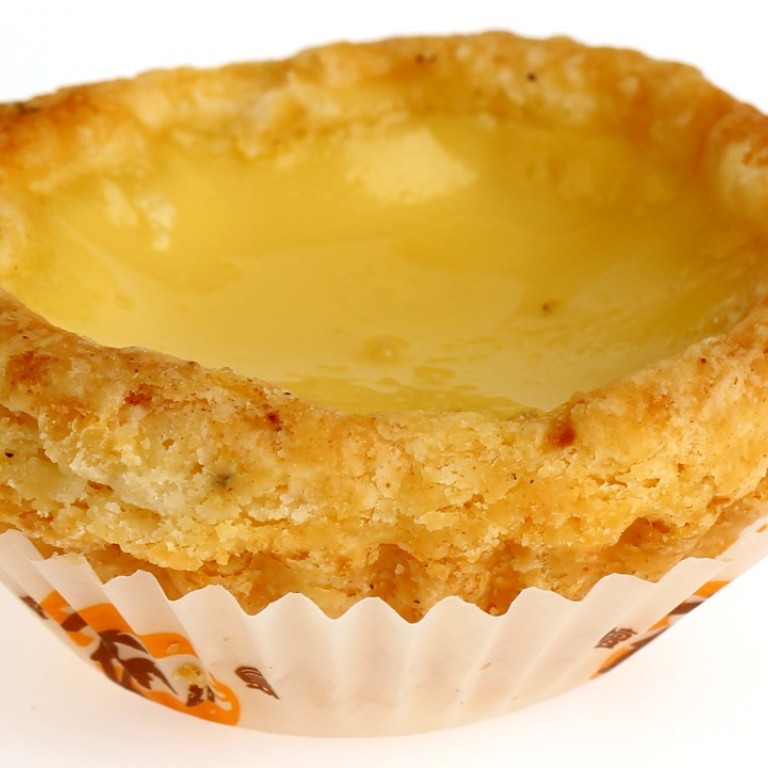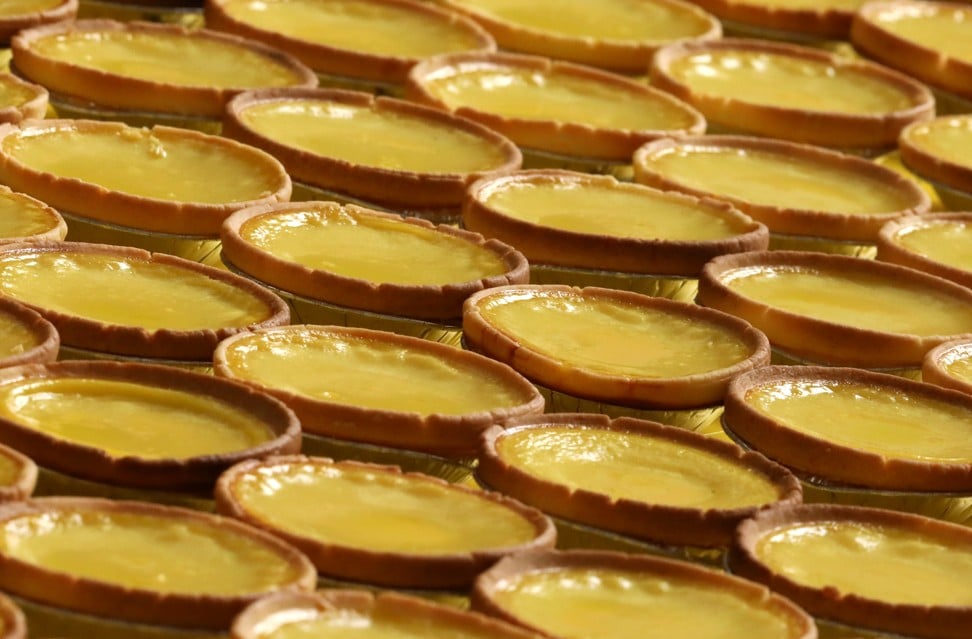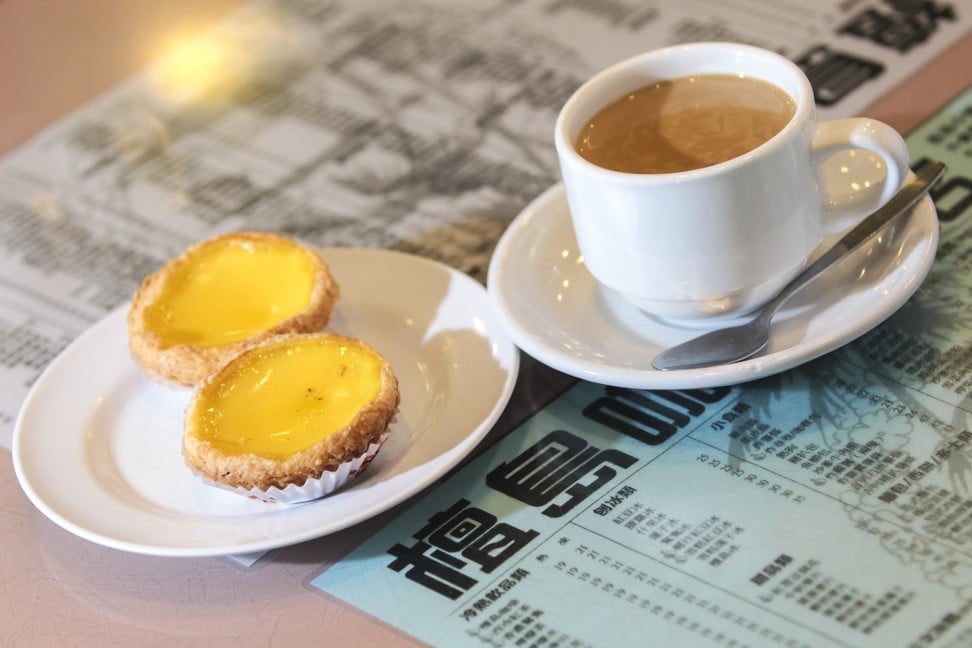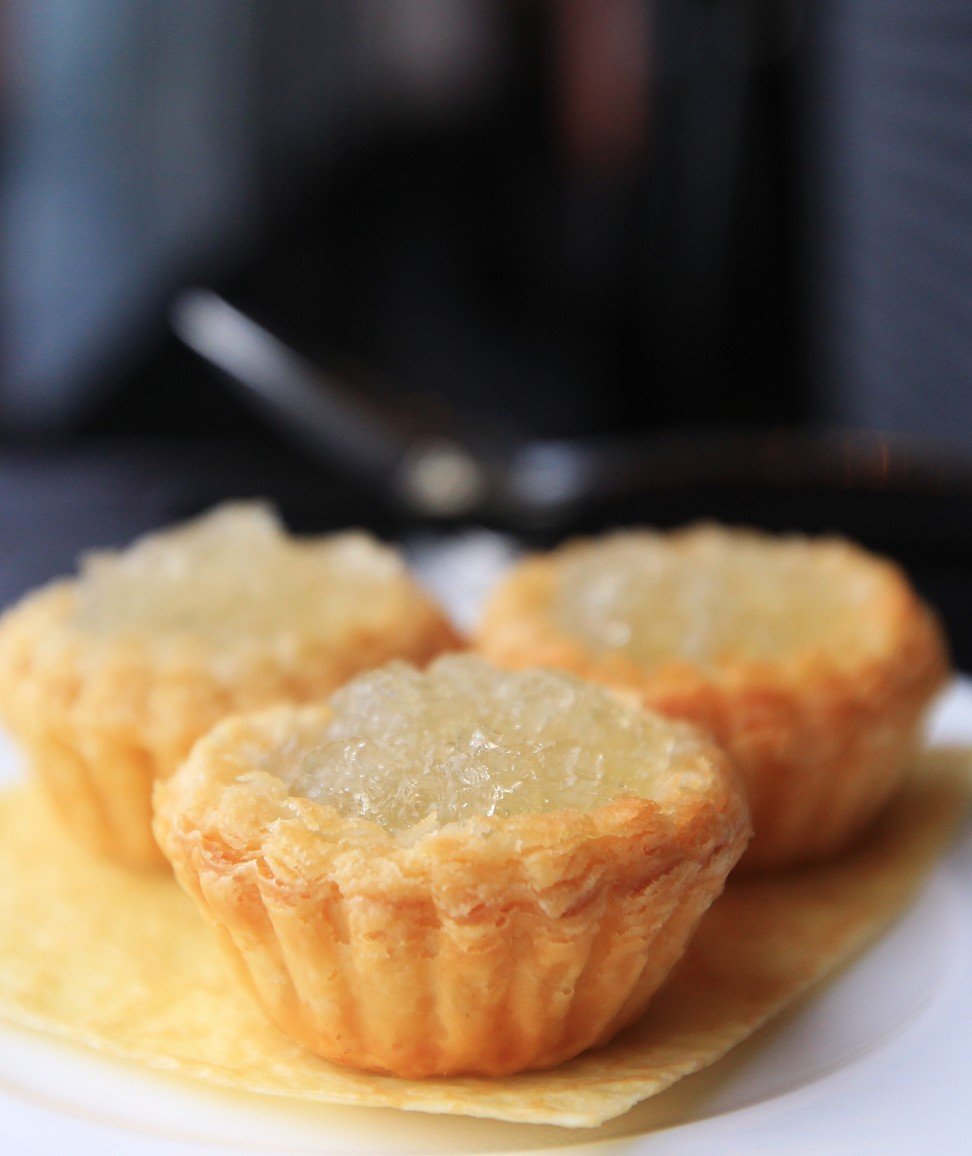Hong Kong egg tarts are not vegetarian – and here’s why

Much like Macau’s Portuguese tarts, Hong Kong’s version was influenced by Europe, where trade and colonialism played a considerable part in inducing European culture into Asia. Eventually, it evolved into something distinctive that the city can now call its own.

It is widely acknowledged that Hong Kong egg tarts took their inspiration from British custard tarts.
The history of the British version, according to Laura Mason’s 1999 book, Traditional Foods of Britain, dates from 1399 and made an appearance on the menu at a banquet held by Henry IV in the 15th century.
The 1920s was a time of great prosperity, particularly for the United States, and also for the Chinese port city of Guangzhou.
It had gained a strong British influence, which led to the opening of Western-style department stores, such as Sincere, Wing On and Sun Sun, all in fierce competition with each other.
The esteemed pastry departments at these stores were pressured to come up with new and exciting items to attract customers, and it is said that the egg tart first appeared on the “Weekly Specials” of these stores.
In 1927 Guangzhou’s Zhen Guang Restaurant (真光酒樓) created the egg tart that Hongkongers know today.
Wong Wai-tim, executive dim sum chef of the Royal Garden Chinese Restaurant, says the difference is in the dough.
“Flaky crust egg tart is the classic style from Hong Kong,” he says.
Flaky crust egg tart is the classic style from Hong Kong ... with multiple layers in its structure visible to the naked eye
“It uses puff pastry as the base while the Western tarts normally use shortcrust as the base.
“The texture is lighter and has multiple layers in its structure visible to the naked eye.”
To achieve this layering effect, Wong says that lard or pig fat must be used.
“Adding lard makes the pastry flakier and possesses a unique aroma,” he says.
“Pastry made with just butter would make it crunchy and sharp on the palate, while adding lard makes the texture flakier and lighter. A mixture of butter and lard would be the best.”

Paul Lau, chef de cuisine at Ritz-Carlton’s Michelin-starred Tin Lung Heen, agrees.
“Hong Kong egg tarts use lard or vegetable shortening in the crust, which makes it flakier,” he says.
“I have my own recipe where I make one [dough] mixing flour, egg and water, and another with flour and lard.
“Then I’ll mix roll out the two doughs and layer it.
Hong Kong egg tarts use lard or vegetable shortening in the crust, which makes it flakier ... the lard and the water won’t mix, separating the layers and making that extra flaky crust
“The trick is the fat from the lard and the water won’t mix, separating the layers and making that extra flaky crust.”
The People’s Republic of China was formed in 1949, and the country moved to socialism in 1956, and the restaurants and department stores became state-owned enterprises, but the culture of egg tarts had already made its way to Hong Kong.
By the 1950s, the dessert had gone from something found in restaurants to being a tea item consumed in tea houses or cha chaan teng.

The original egg tarts were said to be larger and served as a single item by themselves on a plate. Nowadays a standard egg tart is served in either twos or threes, after the mini versions became popular in the 1990s.

Shortcrust and flaky-pastry egg tarts are equally popular among Hong Kong residents today.
However, it is important to remember that it is the multi-layered, melt-in-your-mouth flaky crust – made with lard – that gives Hong Kong egg tarts their distinctive appearance.
And because the pastry is made using lard it also means that vegetarians are unable to enjoy them.
Want more stories like this? Sign up here. Follow STYLE on Facebook, Instagram and Twitter

The small flaky pastry desserts – one of the quintessential food items on the city’s Intangible Culture Heritage list – were inspired by British custard tarts
